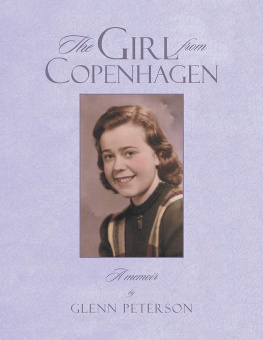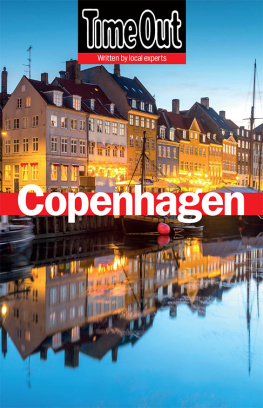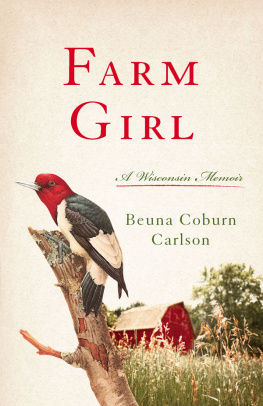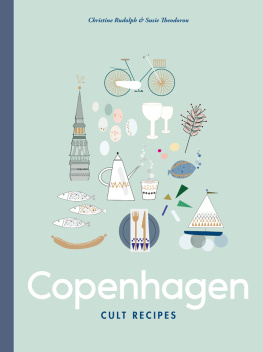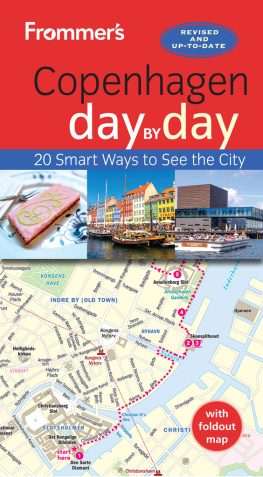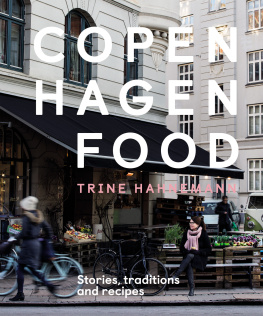The GIRL from
COPENHAGEN
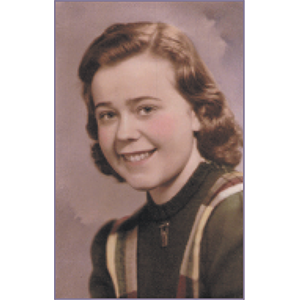
A memoir
by
GLENN PETERSON
Copyright 2018 by Glenn Peterson. 788432
Library of Congress Control Number: 2018914268
ISBN: | Softcover | 978-1-9845-7018-5 |
Hardcover | 978-1-9845-7019-2 |
EBook | 978-1-9845-7017-8 |
All rights reserved. No part of this book may be reproduced or transmitted in any form or by any means, electronic or mechanical, including photocopying, recording, or by any information storage and retrieval system, without permission in writing from the copyright owner.
Rev. date: 12/04/2018
Xlibris
1-888-795-4274
www.Xlibris.com
CONTENTS
IN MEMORY
OF
INGE E. PETERSON
1923-2018
The Girl From Copenhagen is a memoir. It includes a photo section that follows my mothers life from childhood into old age. Born in Denmark in 1923 on the island of Falster (Amid thunder and lightening, as she was fond of saying), Inge Buus had an idyllic life growing up with her brother and sister on their fathers farm. All three siblings learned to ride a horse by the age of eight or nine. Inge, however, was anything but a farm girl. She never mastered the art of milking a cow. She refused to drink milk. During the fall slaughtering time, she would stay in her room and close the door so she would not hear the squealing of the fattened pigs. She avoided gathering eggs because the hens would peck her fingers. After graduating at the top of her high-school class, she moved to Copenhagen to study nursing. Unfortunately, her nursing career was cut short when her ankles began swelling up on her long shifts, rendering her as infirm as some of her patients. She subsequently found employment as a bookkeeper at Burmeister and Wain, the largest shipbuilder in Denmark.
Inge and her family witnessed the German invasion of Denmark on April 9, 1940. At first, the occupation did not seem all that bad. The Danish economy, in a recession at the time, prospered with the German wartime demand for produce and machinery. But then the Nazis began to tighten the screws, revealing their true intentions as they attempted to round up and deport Denmarks Jewish population to concentration camps. This was the last straw for the Danish people, who considered their Jewish neighbors as Danes first and Jews second, and succeeded in smuggling most of Denmarks 8,000 Jews to neutral Sweden on a flotilla of small fishing boats. After this blatant act of defiance, Hitler ordered a crackdown on his Danish protectorate. On her way to work, Inge would pass by German tanks stationed in Copenhagens town square. Helmeted German soldiers armed with machine guns demanded to see her Ausweis. There were almost daily bombings in the heart of the city, some conducted by the Danish Resistance, others conducted by the Germans in retaliation. Inge had mixed feelings about working in the shipyard, which was producing engines for German U-boats, making the yard a target for Allied bombers as well as the Danish Resistance. But the pay was much higher than she would be able to obtain elsewhere, so she chose to stick it out.
The Danes celebrated when the five years of Nazi occupation came to an end. At a dance in Copenhagen, Inge met a dashing young GI, Sergeant Bob Peterson. After a whirlwind courtship, Inge decided to marry her GI. In 1946, leaving behind a loving family and friends, she packed up her belongings in a large wicker basket and sailed to the United States. Bob was employed by Gibbs & Cox, a shipbuilding company in New York City. In the late 1940s and early 1950s he worked on the design of the S.S. United States. Living in an apartment in Jersey City until 1954, Inge and her resourceful mate would drive every Friday night to an undeveloped plot of land in rural New Jersey and work through the weekend. Lacking running water and electricity, they built their dream house with their own hands.
In 1965, with the house completed to Bobs satisfaction, he grew restless and set his sights on greener pastures. Over the next twenty-five years there would be a total of seven more moves, some dictated by the necessities of employment opportunities, others simply places where Bob had aspired from his youth to settle down in. (A house is just a place to hang your hat, Bob once said.) Inge never uttered a word of complaint during all of these moves. No doubt, like her husband, she had the spirit of wanderlust in her bloodafter all, she had gone off to America with a man she had known for no more than a week. During these many moves, Inge made a total of twenty-five trips back to her native Denmark. The love of her life collapsed and died shortly after moving into their new home in Pennsylvania.
Were staying here, Bob promised a few days before his sudden death. No more moves.
Living with her son, Glenn, Inge would make two more trips to Denmark after Bobs death. She would outlive almost all of her contemporaries, dying of dementia at the age of ninety-four.
By her ninety-fourth year my mothers memory problems were becoming more and more evident. She would misplace her watch, her ring, her glasses. She could not tell me what day of the week it was, or even the year. But she always knew the date and year of her birth. She could not remember what she had eaten for supper the day before. Although she like to snack on grapes, she was often unable to remember what they were called. But when looking through one of her photo albums, she could still recall the names of her childhood friends back in her native Denmark. One day she surprised me by rattling off the telephone number at Klostergaarden, her fathers farma number she had not used since the farm was sold in 1942.
Inge Elizabeth Buus was born on July 29, 1923 in the small town of Stubberup, located near Nykbing on the island of Falster. She was delivered by a midwife in the home of her mothers parentsamid thunder and lightening, as she was fond of saying. Her father, Lars Buus, came from a long line of farmers. His father, Peter Buus, owned a farm in western Jutland called Risgaard. One of Lars uncles, Jens Buus, wrote the first textbook in Danish covering all aspects of farming and animal husbandry. In 1920 Lars married Ella Johanne Pedersen. They had three children, Knud, Inge, and Anna Lise, who grew up on their fathers farm, Klostergaardenso named because of its resemblance to a medieval cloister, with four main buildings enclosing an open courtyard. It was a good-sized farm with perhaps fifteen to twenty permanent workers, more during the sowing and harvesting seasons. There were cooks and servants. Pictures of Lars Buus taken at the time show him wearing a suit and tie, looking more like a country squire than your typical farmer.
For young children growing up on a farm there was no lack of things to see and do. One day Inge and her siblings might gather by the pen of a prized sow and watch it give birth to a litter of squealing piglets. (Which would have to be removed for the night lest the sow roll over in her sleep and accidentally crush her offspring.) The next day the children might witness a newborn foal taking its first hesitant steps. They would gather by the cow stalls and watch the men milk the cows. Now and then they would try their hand at a butter churna tiring job even for a grownup once the butter began to thicken. Harvest time was always an exciting event for the children, with extra hands arriving to pick the maturing cabbage and lettuce, and to dig up the sugar beets, turnips, and potatoes. The wheat harvest was no longer labor-intensive as it had been at Risgaard, when the the sheaves of wheat had to be cut, bundled, and stacked by hand. Here at Klostergaarden the work that had formerly employed dozens of men was accomplished by only two men in a mere fraction of the time: one man operated the huge combine harvester that cut, threshed, and separated the grain from the chaff; the other man steered a tractor with an attached wagon that stored the processed wheat to be later bundled into sacks. The harvest had to be done promptly lest the fat seed heads became moldy, and this was a chancy proposition at best, as the combine, traveling from farm to farm, had to be reserved weeks in advance of the actual harvest. The arrival of the combine was a stirring sight. It looked and sounded with its engine roaring like some monster advancing slowly and menacingly as it consumed the rows of wheat. Lukke jnene ! (Close your eyes!), Lars would say by way of teasing his children when the long-awaited combine made its appearance. As on all of these harvests, the hope was that the weather would be dry. Rain could be a curse as well as a blessing, making all the difference between a good crop and a failed crop. Whatever the outcome of the harvest, there was always next year to prepare for. A farmers day is never done. Pulling on stout boots, the children would accompany their father as he surveyed the muddy spring fields, impatient for the ground to dry out so the next crop of wheat could go in.
Next page
